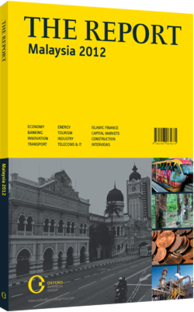OBG talks to Zam Isa, Group CEO, Telekom Malaysia

Interview: Zam Isa
What potential do you see for the continued growth of the penetration rate in the broadband market?
ZAM ISA: Today broadband penetration is no longer driven by the service provider, but by the users. Growth is driven by the need to access content, whether it be social media or entertainment. In terms of convincing people that they need broadband, there is less to do in that area nowadays as people are aware of the benefits. Malaysia already has a 65% penetration rate in households, so people can see the benefits, whether it is from neighbours or family who already have the service. However, beyond the urban areas, there is still a digital divide and that is being addressed through the use of wireless technologies such as mobile broadband, which to a degree are rendering metrics such as household penetration obsolete. In the future, we will be looking at metrics such as usage per capita, for example, and in that respect I feel Malaysia’s usage of internet services is a much more relevant benchmark than is reflected in the 65% penetration rate.
At what point do you believe competition will begin driving down the price of data services and spur a rise in the quality of service?
ZAM: Market forces will obviously continue to exert downward pressure on pricing. Quality, however, is something that is always a work in progress and needs to be continuously improved. On the one hand, enhanced quality is easily achieved for fixed-line internet services, albeit at the expense of reach; on the other hand, mobile wireless offers excellent reach, but quality can be a challenge. Investments to enhance quality will be dictated by users, who are the driving force behind the change in revenue mix from voice to non-voice among mobile providers. As usage increases, the providers will be able allocate more of their cash flow to investments in network quality. In addition, competition between different technologies and providers has helped to drive progress.
What incentives could be introduced to spur greater ICT spending among the small and medium-sized enterprise (SME) segment?
ZAM: The SME segment itself is still a broad market. The larger SMEs have already embraced ICT technologies. On the smaller end of the spectrum, their behaviour is more like that of consumers. We need to provide products that are tailored to their needs, but are economical enough for providers to roll out on a large scale. That is the challenge. Cloud technologies will allow SMEs to get the benefit of the service, without the need to own the infrastructure. From the government’s point of view, tax incentives could help to nudge them into adoption. Educating small and medium-sized enterprises inn technology to help their business is crucial.
How will internet protocol television (IPTV) services evolve as new players come to market?
ZAM: First and foremost, we must look at what IPTV means to the different players in the market. For us it is part of our triple-play package, it is part of creating our value proposition. To someone else, it could be their primary offering. So in that context, the industry will continue to grow in different directions. We have seen tremendous growth, some of it driven by fibre technologies and what they bring to the table, such as interactivity with the user, in addition to features such as video on demand. It’s no longer just a one-way broadcast, which opens up a host of new opportunities. The content side is under review by the industry. There is a shift towards reducing the exclusivity of content, just as agreements to share infrastructure were taken at a time when that seemed counter-intuitive. Content should be made available to everyone in a similar manner. Of course players will still want an edge in niche areas, but content with mass appeal should be open. As an industry, we need to address this together, because content owners are not easy to deal with. We must convince them that it will be more profitable to license content to a multitude of networks.
You have reached the limit of premium articles you can view for free.
Choose from the options below to purchase print or digital editions of our Reports. You can also purchase a website subscription giving you unlimited access to all of our Reports online for 12 months.
If you have already purchased this Report or have a website subscription, please login to continue.

